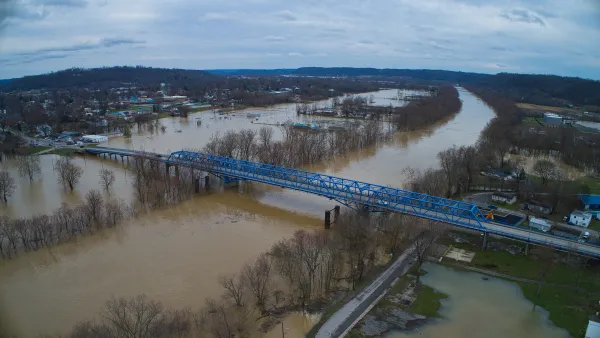Come November, 11 of Colorado's 64 counties, mostly in northeast, will vote to form a new state. Jack Healy explores what's behind the 51st State Initiative, what set it off, as well as other secession movements, mostly by rural areas in the U.S.
Seven additional counties could possibly join the movement, according to the map of The 51st State Initiative. If not secession, two alternative goals would be additional representation in the state senate or annexation by Wyoming.
Secession movements are hardly new - see our Sept. 6 post of the latest development in the long-standing effort to form the state of Jefferson in northern California and southern Oregon and NPR's "Beyond 50: American States That Might Have Been" on Michael J. Trinklein's book on the topic. The last successful effort resulted in the formation of West Virginia in 1863, writes Healy.
While the break-away movement to form "New Colorado" has been simmering for a long time, it was the recent gun regulations prompted by the mass shootings last year in an Aurora, Colo. movie theater and a Newton, Conn. school, the same ones that caused a successful recall last month of two state senators, that truly inspired it.
Urban-rural, liberal-conservative divides lie at the heart of the secession movement, yet there are glaring inconsistencies. Healy quotes Lyle Miller, who owns the convenience store in Cheyenne Wells where he wrote the article.
"I would’ve never believed the state of Colorado would become this liberal. I’m afraid for my grandchildren. I want them to have the same heritage I had".
Healy points to demographic statistics that indicate that Miller's grandchildren are more likely to leave Cheyenne County than stay, with the population reduced almost 50% from it's peak of 3,700 people, notwithstanding the low unemployment rate of 3.9 percent in the county due to thriving agriculture and oil fields.
The last two decades have brought sharp population declines as children moved away and the descendants of homesteading families died off. The county’s population is now 1,870, about one resident per square mile.
Jeffrey Hare, a leader of the 51st State Initiative, states, "What we’re attempting to do is restore liberty. People think this is a radical idea,” he said. Yet recent state laws that have increased liberty, such as legalizing marijuana and gay civil unions do not appear to be welcomed changes.
Should the votes succeed, two additional hurdles would await. "(T)he state must then vote to allow them to leave. After that, Congress would have to agree to admit a new state", writes Healy. However, the movement appears to be reaping political gains as Democratic governor, John W. Hickenlooper, who runs for reelection next year, "has already vowed to chart a more moderate course when the legislature comes back into session," writes Healy.
UPDATE (11/19/2013): In five of the 11 counties where a measure to secede from Colorado was on the Nov. 5 ballot, voters said "yes"; the remaining six voted 'no'. The urban-rural divide was as the heart of the "51st State Initiative". The ballot results are described in greater detail here by Monte Whaley of The Denver Post.
FULL STORY: Fed Up on the Prairie, and Voting on Seceding From Colorado

National Parks Layoffs Will Cause Communities to Lose Billions
Thousands of essential park workers were laid off this week, just before the busy spring break season.

Retro-silient?: America’s First “Eco-burb,” The Woodlands Turns 50
A master-planned community north of Houston offers lessons on green infrastructure and resilient design, but falls short of its founder’s lofty affordability and walkability goals.

Delivering for America Plan Will Downgrade Mail Service in at Least 49.5 Percent of Zip Codes
Republican and Democrat lawmakers criticize the plan for its disproportionate negative impact on rural communities.

Test News Post 1
This is a summary

Test News Headline 46
Test for the image on the front page.

Balancing Bombs and Butterflies: How the National Guard Protects a Rare Species
The National Guard at Fort Indiantown Gap uses GIS technology and land management strategies to balance military training with conservation efforts, ensuring the survival of the rare eastern regal fritillary butterfly.
Urban Design for Planners 1: Software Tools
This six-course series explores essential urban design concepts using open source software and equips planners with the tools they need to participate fully in the urban design process.
Planning for Universal Design
Learn the tools for implementing Universal Design in planning regulations.
EMC Planning Group, Inc.
Planetizen
Planetizen
Mpact (formerly Rail~Volution)
Great Falls Development Authority, Inc.
HUDs Office of Policy Development and Research
NYU Wagner Graduate School of Public Service




























